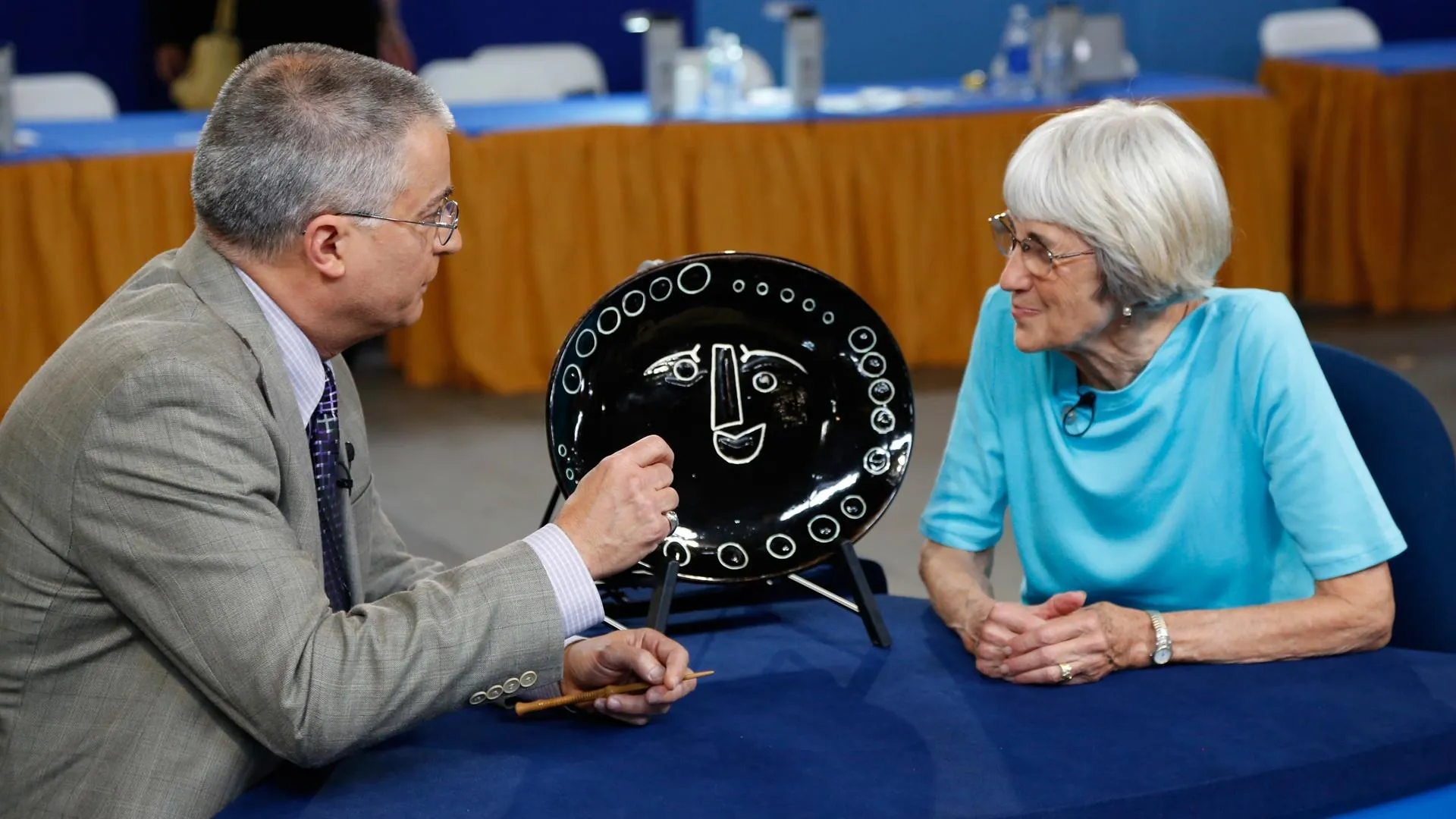GUEST: This is a piece by the Anna Pottery Company, which was started by the Kirkpatrick brothers, Cornwall and Wallace, in the 1800s. And Cornwall Kirkpatrick is my great-great-grandfather, so it was passed down. I'm probably the fifth generation to have it. My parents gave it to me, and so here it is in Boise.
APPRAISER: Wow. So it's always been in the family.
GUEST: Yes.
APPRAISER: And it was made by a family member back then?
GUEST: It was made by a family member. It's hard to tell whether Wallace or Cornwall Kirkpatrick made it-- I don't know how you would know that-- but it was definitely made by the Anna Pottery, which was their company.
APPRAISER: When did the family stop potting?
GUEST: I am thinking that at least Cornwall Kirkpatrick died in the early 1890s, and I don't know how long it went on afterward.
APPRAISER: Yeah, the factory closed about then. Nicely inscribed, as you'd find on some Anna Pottery. And dated, as you also find on some Anna Pottery, if you're lucky-- in this case, 1884. And do you know why it's called the Anna Pottery?
GUEST: It's called the Anna Pottery because it was located in Anna, Illinois, which is where I was born.
APPRAISER: Right. If we're going to venture a guess as to who modeled it, by the way, my money would be on Wallace, who was a master modeler, and you can see a good deal of modeling on the vase here. The vase itself is potted in a conventional way-- it's been thrown in this kind of baluster shape vase-- and then the flowers, which are the strength of the design, are molded individually and then pressed onto this and kind of hand-built around the body of the vase. And then it's been additionally decorated with engraving, kind of scratch engraving, into the vase body itself. It's made, by the way, of stoneware. They specialized in stoneware at this time. Have you ever had your piece valued or appraised in any way?
GUEST: No.
APPRAISER: I think it's fair to say that when the Kirkpatrick family made these things, I very, very much doubt that they ever thought they'd be worth anything, if you'd like, monetarily. They were not high-end manufacturers selling in expensive stores to wealthy members of society. They were very much ordinary potters making things for ordinary folk. In many respects, that's why we like them today. There's a great honesty in Anna Pottery. I suspect if it came in a good auction today, the low estimate would be around $10,000. And I think the high estimate could be as much as $15,000.
GUEST: That's good to know, because we probably need to have it insured. We have several pieces, so...
APPRAISER: If you have several pieces, this may not be the most valuable one. They also made at this time vases of a similar scale with snakes on them.
GUEST: Right.
APPRAISER: And the snake vases are more appealing and much more valuable. They can be worth twice as much as the value I gave you on this.
GUEST: Unfortunately, we don't have any snake vases.











